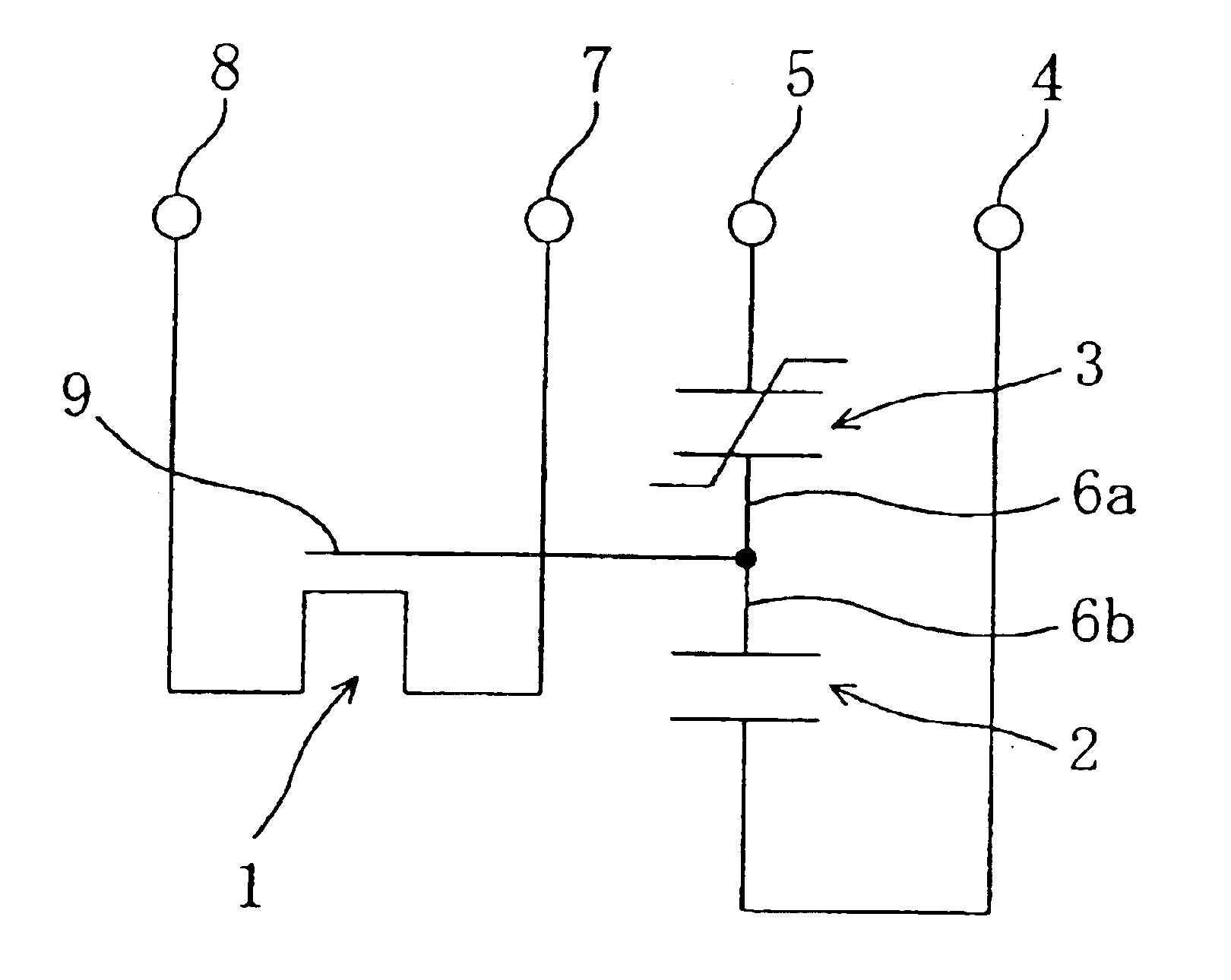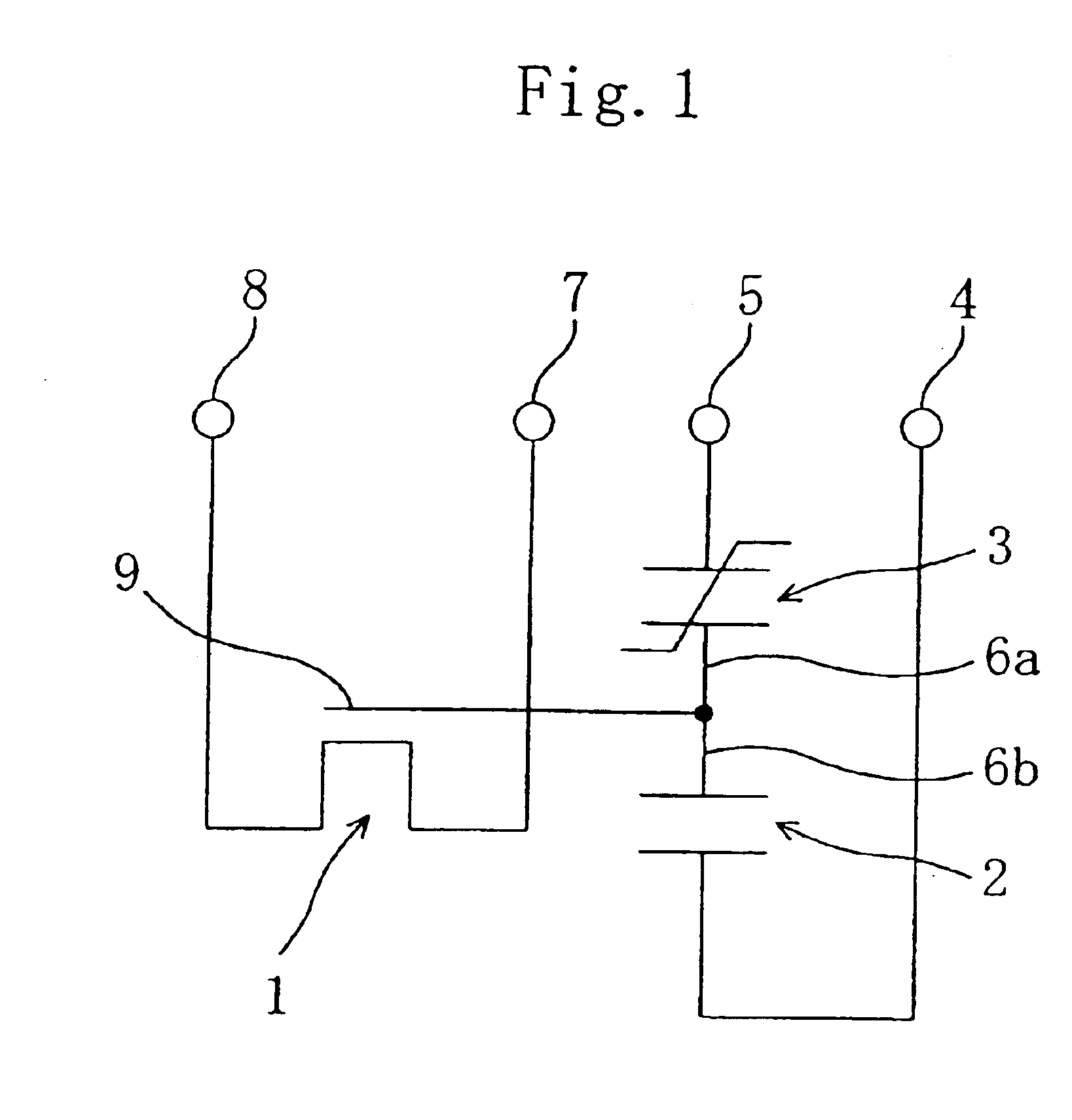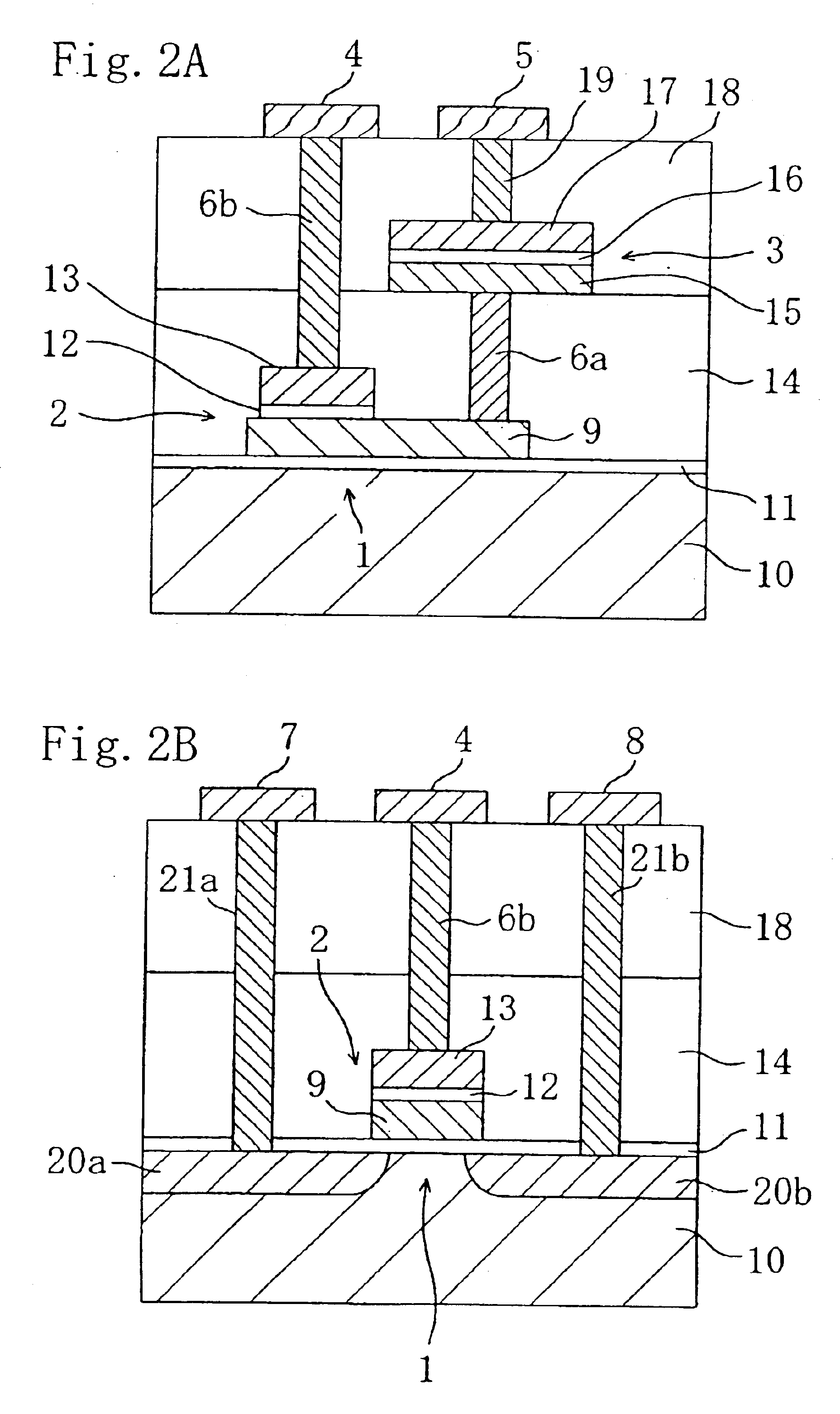Semiconductor device and method for driving the same
a semiconductor and logic element technology, applied in semiconductor devices, digital storage, instruments, etc., can solve the problems of easy affecting total capacity, erased stored data, and above-mentioned conventional technologies, and achieve simplified semiconductor device structure, low power source voltage, and reliable threshold shift
- Summary
- Abstract
- Description
- Claims
- Application Information
AI Technical Summary
Benefits of technology
Problems solved by technology
Method used
Image
Examples
first embodiment
FIG. 1 is an equivalent circuit diagram of a nonvolatile semiconductor storage element (nonvolatile memory cell) according to the present invention.
As shown in FIG. 1, the nonvolatile semiconductor storage element of the present embodiment is provided with a MISFET 1, a floating gate electrode 9 of the MISFET 1, and a dielectric capacitor 2 and a ferroelectric capacitor 3, which are connected to the floating gate electrode 9 via a node 6a and a node 6b, respectively. Also, this nonvolatile semiconductor storage element is configured such that polarization can be generated as information in the ferroelectric film of the ferroelectric capacitor 3 by applying a voltage between a first polarization voltage supplying terminal 4 and a second polarization voltage supplying terminal 5. Furthermore, it is configured such that when read-out voltage is applied between a ground terminal 7 and a power source voltage terminal 8, which are connected to the source and drain regions of the MISFET 1,...
second embodiment
FIG. 4 is an equivalent electric circuit diagram of a nonvolatile semiconductor storage element (nonvolatile memory cell) according to a second embodiment of the present invention.
As shown in FIG. 4, in addition to the configuration of the semiconductor storage element according to the first embodiment, the nonvolatile semiconductor storage element of the present embodiment includes a pass transistor 25, which is provided between the MISFET 1 and the power source voltage terminal 8, and a control terminal 26, which is connected to the gate electrode of the pass transistor 25. In the present embodiment, structural components such as the MISFET 1, the dielectric capacitor 2, the ferroelectric capacitor 3, the first polarization voltage application terminal 4, the second polarization voltage application terminal 5, the ground terminal 7, and the power source voltage terminal 8, are the same as those of the first embodiment, so further diagrammatic illustration and description of the st...
third embodiment
FIG. 5 is an equivalent circuit diagram of a nonvolatile semiconductor storage element according to a third embodiment of the present invention.
As shown in FIG. 5, the nonvolatile semiconductor storage element of the present embodiment includes, in addition to the structure of the semiconductor storage element according to the first embodiment, a control gate electrode 27, which is provided above the floating gate electrode 9 of the MISFET 1 and sandwiches the insulating film therewith, and a control voltage applying terminal 28 for applying a read-out voltage to the control gate electrode 27. That is to say, in addition to the MISFET 1, the dielectric capacitor 2, the ferroelectric capacitor 3, the first polarization voltage application terminal 4, the second polarization voltage application terminal 5, the ground terminal 7, and the power source voltage terminal 8 of the nonvolatile semiconductor storage element of the first embodiment as shown in FIGS. 2A and 2B, the nonvolatile ...
PUM
 Login to View More
Login to View More Abstract
Description
Claims
Application Information
 Login to View More
Login to View More - R&D
- Intellectual Property
- Life Sciences
- Materials
- Tech Scout
- Unparalleled Data Quality
- Higher Quality Content
- 60% Fewer Hallucinations
Browse by: Latest US Patents, China's latest patents, Technical Efficacy Thesaurus, Application Domain, Technology Topic, Popular Technical Reports.
© 2025 PatSnap. All rights reserved.Legal|Privacy policy|Modern Slavery Act Transparency Statement|Sitemap|About US| Contact US: help@patsnap.com



